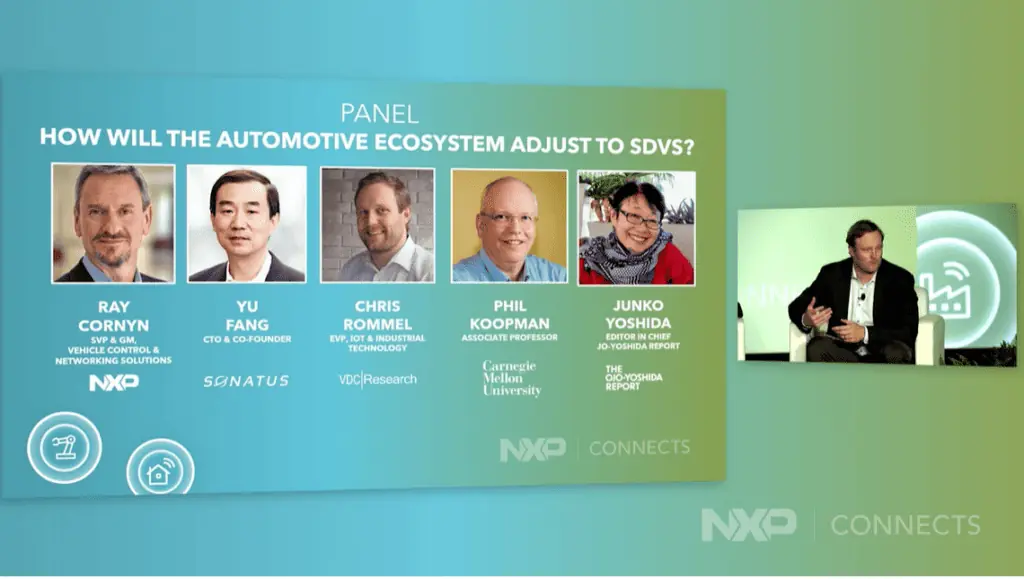
How will the Automotive Ecosystem Adjust to SDVs? (Source: NXP Connects)
The software-defined vehicle (SDVs) has become one of the hottest ––possibly most overused –– buzzwords in the automotive industry.
Forget the hype.
An expert panel, assembled by NXP Semiconductors and moderated by Chris Rommel, executive vice president at VDC Research, clarifies what an SDV is—and is not—why carmakers want SDVs and the unexpected challenges this next big thing poses to automotive vehicle architecture.
Here’s a brief take from each panelist.
Ray Cornyn, senior vice president and general manager, vehicle control and networking solutions at NXP:
“I hope people see SDV not necessarily as Angry Birds running on your vehicle infotainment systems, but as fully configurable vehicles — where you can change functionality and keep the vehicle evolving as it gets older.”
Yu Fang, CTO and Founder at Sonatus:
“SDVs enable OEMs to do what we’ve always wanted them to do.
“SDVs allow OEMs to gain deep visibility into their vehicles – not only what’s happening with their vehicle, but also how their customers are using those vehicles.”
SDVs enable OEMs to “use that information to improve their products, deploy those new features and new services, and be able to do this continuously throughout the lifecycle of the vehicle.” SDVs will bring OEMs “unprecedented flexibility, extensibility and scalability.”
Phil Koopman, associate professor at Carnegie Mellon University:
“You can say cell-phone crash. And you could say car crash. They are kind of the same words, but they have different implications. It’s important, and it’s actually a lot deeper than you might think.
“What happens is, as soon as you allow software to influence the behavior of the vehicle in any way, which is the point of SDV, that all this infrastructure, and things that didn’t used to be a big deal, all of a sudden become life critical.
“You might say that your autonomous vehicle is safe because you have fully accurate High-Definition maps that are updated. But that means that the entire data pipeline just became life critical. Your cloud server, suddenly, becomes a matter of life and death.”
“You can get a lot of cool features via SDVs, but they come with a lot of implications for safety… in other words, SDVs can affect safety and invoke a lot of things that didn’t used to be as big a deal as they were before.”
Junko Yoshida, editor-in-chief of The Ojo-Yoshida Report:
“A lot of reporters including myself used to think of SDVs as connected cars – creating the illusion of ‘smartphones on wheels’ and running apps on an apps processor. That’s not it. SDV is about a new vehicle architecture that makes it possible for new features and a variety of resources inside a vehicle — processing power or memory – to permeate it” throughout a vehicle.
Junko Yoshida is the editor in chief of The Ojo-Yoshida Report. She can be reached at junko@ojoyoshidareport.com.
Copyright permission/reprint service of a full Ojo-Yoshida Report story is available for promotional use on your website, marketing materials and social media promotions. Please send us an email at talktous@ojoyoshidareport.com for details.
